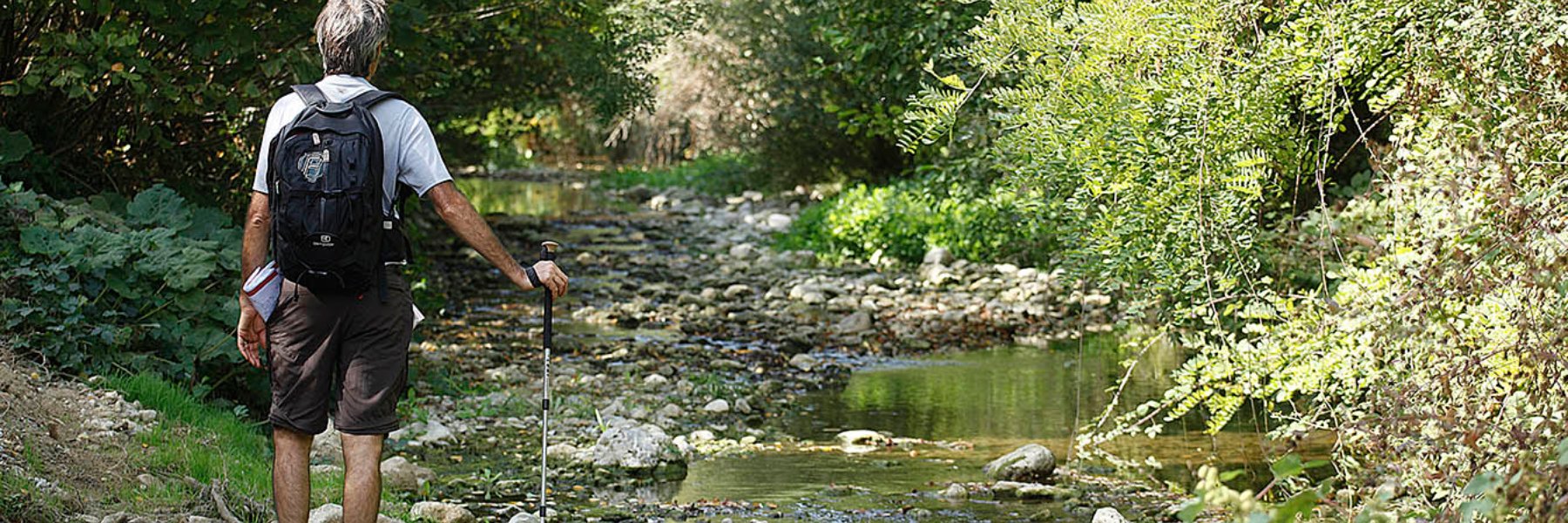Sito ufficiale della Francigena Toscana ©2026
Scorri in basso per cambiare lingua


A pilgrimage along the Tuscan stretch of the via Francigena can end up being the journey of a lifetime, and following a few useful suggestions, the route will be less tiring and truly unforgettable. Before you begin, it’s important to prepare yourself physically, since every day you’ll be walking up to 30 km, a trying experience for those who aren’t trained or who don’t have the right equipment for such a long walk. The season you choose to walk the road is also very important, because during the winter, you could run into some really rainy days and stretches that are blanketed in snow, while in the summer, the weather is extremely hot and the shade can be lacking in some areas. May, June, September and October are the best months to undertake the journey.
To make your walk comfortable, you should seriously consider what shoes to wear, which should be light but able to guarantee stability for the ankles. It’s useful to have waterproof shoes (especially if you want to walk the route in a rainy period or cross through water), but they should also be breathable, so your feet can stay dry in order to avoid painful blisters. Blisters can also be avoided with specialized socks that are reinforced around the heel and toes, as well as with specific Band-Aids.
Your backpack is also a fundamental aspect because you risk making your journey uncomfortable if it’s too heavy. The golden rule is that the backpack not exceed 10% of your own weight, has a capacity of 40 litres and sticks well to your back; this way you can avoid wasting energy due to an unbalanced pack. To protect your clothing and other personal items, it’s also a good idea to cover your backpack when it rains.
You should pack only what is strictly necessary. Here are our suggestions for pilgrims walking the entire length of the Francigena in Tuscany or multiple stretches back-to-back:
The rest is up to you. You could throw in a notebook and pen to record your thoughts along the way, or you could bring a light camera, or even better, a good book to read during your downtime. In any case, you should always remember that your backpack will be your main travel companion, and having a good rapport with it will be key to taking on the hike with ease.
The use of technological devices can be really useful on the walk, especially for amateur hikers. Modern smartphones and tablets allow pilgrims to see their position on the map thanks to GPS, read guides, surf the internet and make telephone calls (even in an emergency, if need be). These devices are also relatively light, a fundamental aspect for anyone backpacking.
On this website, in the Find Your Bearings section, you can find KML maps for every leg, which you can download to your smartphone or tablet so you can always have them with you along the way. To see the maps on your device, you need to install an app that can read the downloaded files (on the App Store and Play Store, you can find several apps capable of reading KML files, some even free).
Lastly, the official via Francigena guide is available as an e-book (for a fee) through the free app “I Percorsi di Terre di mezzo,” which also has a GPS feature so you can know where you are.